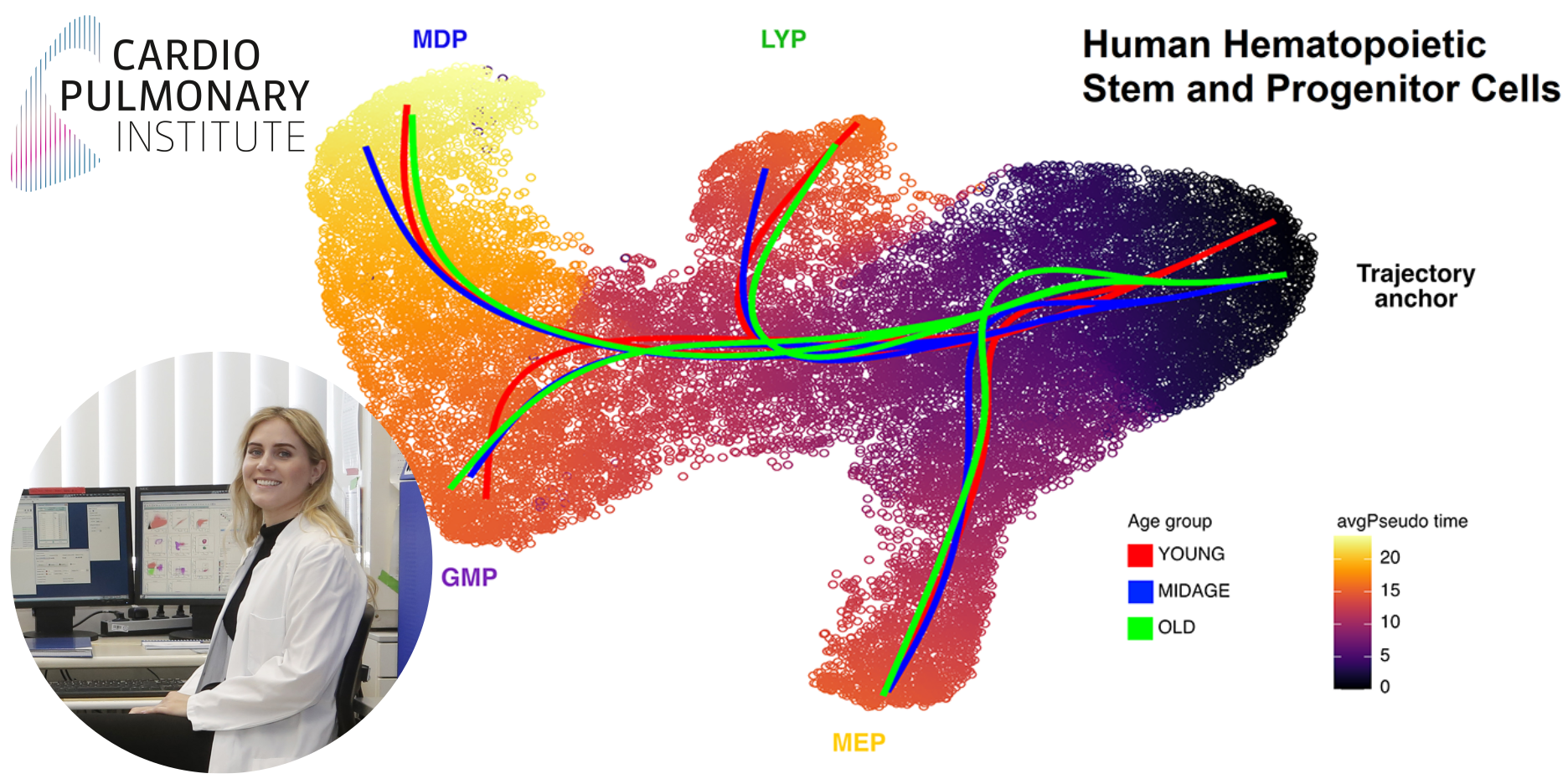
*These authors contributed equally: Hana Komic, Tessa Schmachtel, Catia Simoes, Marius Külp
The blood system is highly regenerative with the emergence of 5 Mio new blood cells every second. The continuous production of all blood cell types is orchestrated in a differentiation hierarchy originating from rare hematopoietic stem cells (HSCs) in the bone marrow. While intensely investigated for decades, new developments including advanced single cell sequencing technologies enable to resolve remaining heterogeneity among human stem and progenitor cells (HSPCs) and to elucidate molecular cues of early fate decision control, differentiation induction and lineage choice.
The authors of this study generated a continuous map of early human HSC differentiation trajectories by investigating a large number of FACS-enriched stem/progenitor cells from 15 donors across all age groups, using BD Rhapsody-based single cell proteo-transcriptomic sequencing. Reconstructing the human hematopoietic differentiation hierarchy, they provide a resource of gene expression changes upon early steps in differentiation and lineage choice upon various age groups. The targeted sequencing approach enabled the authors to accurately quantify gene expression levels at early stages of human hematopoiesis, in order to reveal candidate genes for stemness integrity and surface proteins for HSC detection. Furthermore, they illustrate the gene expression of common leukemia-associated genes in human HSPC populations during early steps in differentiation – genes, which are often mutated in clonal hematopoiesis. “Our single cell data set of early human hematopoiesis will provide a rich resource and valuable reference map for future studies on stem cells carrying driver somatic mutations or genomic alterations in leukemia and clonal hematopoiesis.” says PhD student Tessa Schmachtel, co-first author of the study.
To the authors´ surprise, they identified the immune checkpoint surface protein PD-L2 (CD273) being highly expressed on the most immature HSPCs. Functional experiments confirmed the immune-modulatory function of PD-L2 on HSPCs in regulating T-cell activation, subtype specification and cytokine release. “These results suggest an immune modulation by stem and progenitor cells which may be fundamental in stress hematopoiesis upon inflammation or stem cell transplantation.” concludes co-first author Marius Külp, supported member of the CPI Academy.
Find the full article here: https://www.nature.com/articles/s41467-025-57096-y
You need to load content from hCaptcha to submit the form. Please note that doing so will share data with third-party providers.
More InformationYou need to load content from reCAPTCHA to submit the form. Please note that doing so will share data with third-party providers.
More InformationYou need to load content from reCAPTCHA to submit the form. Please note that doing so will share data with third-party providers.
More InformationYou need to load content from reCAPTCHA to submit the form. Please note that doing so will share data with third-party providers.
More InformationYou need to load content from Turnstile to submit the form. Please note that doing so will share data with third-party providers.
More Information